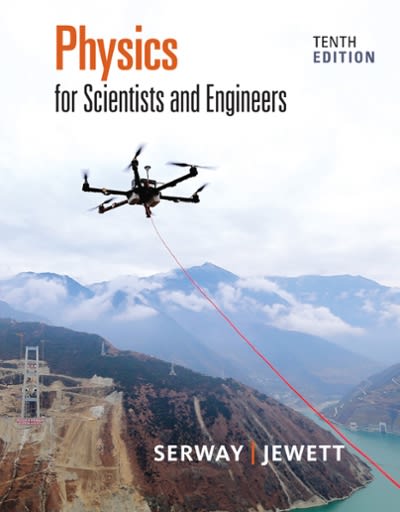Question
3. Buses arrive to a bus stop according to an exponential distribution with rate ?= 4 busses/hour. If you arrived at 8:00 am to the
3. Buses arrive to a bus stop according to an exponential distribution with rate
?= 4 busses/hour. If you arrived at 8:00 am to the bus stop,
a) what is the expected time of the next bus?
b) Assume you asked one of the people waiting for the bus about the arrival
time of the last bus and he told you that the last bus left at 7:40 am. What
is the expected time of the next bus?
4. Break downs occur on an old car with rate ?= 5 break-downs/month. The owner
of the car is planning to have a trip on his car for 4 days.
a) What is the probability that he will return home safely on his car.
b) If the car broke down the second day of the trip and the car was fixed, what is
the probability that he doesn't return home safely on his car.
5. Suppose that the amount of time one spends in a bank is exponentially distributed with
mean 10 minutes. What is the probability that a customer will spend more than 15
minutes in the bank? What is the probability that a customer will spend more than 15
minutes in the bank given that he is still in the bank after 10 minutes?
6. Suppose the lifespan in hundreds of hours, T, of a light bulb of a home lamp is
exponentially distributed with lambda = 0.2. compute the probability that the light bulb
will last more than 700 hours Also, the probability that the light bulb will last more than
900 hours
7. Let X = amount of time (in minutes) a postal clerk spends with his/her customer. The
time is known to have an exponential distribution with the average amount of time equal
to 4 minutes.
a) Find the probability that a clerk spends four to five minutes with a randomly selected
customer.
b) Half of all customers are finished within how long? (Find median)
c) Which is larger, the mean or the median?
8. On the average, a certain computer part lasts 10 years. The length of time the computer
part lasts is exponentially distributed.
a) What is the probability that a computer part lasts more than 7 years?
b) On the average, how long would 5 computer parts last if they are used one after
another?
c) Eighty percent of computer parts last at most how long?
d) What is the probability that a computer part lasts between 9 and 11 years?
9. Suppose that the length of a phone call, in minutes, is an exponential random variable
with decay parameter = 1/12 . If another person arrives at a public telephone just before
you, find the probability that you will have to wait more than 5 minutes. Let X = the
length of a phone call, in minutes. What is median mean and standard deviation of X?
Another IFR turbine is to be built to develop 250 kW of shaft power from a gas flow of 1.1 kg/s.
The inlet stagnation temperature, T01, is 1050 K, the number of rotor blades is 13, and the outlet
static pressure, p3, is 102 kPa. At rotor exit the area ratio, ? r3h/r3s 0.4, and the velocity
ratio, cm3/U2 0.25. The shroud to rotor inlet radius, r3s/r2, is 0.4. Using the optimum efficiency
design method, determine
(i) the power ratio, S, and the relative and absolute flow angles at rotor inlet;
(ii) the rotor blade tip speed;
(iii) the static temperature at rotor exit;
(iv) the rotor speed of rotation and rotor diameter.
Evaluate the specific speed, ?s. How does this value compare with the optimum value of specific
speed determined in Figure 8.15?
14. Using the same input design data for the IFR turbine given in Problem 5 and given that the totalto-static efficiency is 0.8, determine
(i) the stagnation pressure of the gas at inlet;
(ii) the total-to-total efficiency of the turbine.
15. An IFR turbine is required with a power output of 300 kW driven by a supply of gas at a stagnation pressure of 222 kPa, at a stagnation temperature of 1100 K, and at a flow rate of 1.5 kg/s.
The turbine selected by the engineer has 13 vanes and preliminary tests indicate it should have a
total-to-static efficiency of 0.86. Based upon the optimum efficiency design method sketch the
appropriate velocity diagrams for the turbine and determine
(i) the absolute and relative flow angles at rotor inlet;
(ii) the overall pressure ratio;
(iii) the rotor tip speed.
16. For the IFR turbine of the previous problem the following additional information is made available:
cm3=U2 0:25,w3=w2 2:0,r3s=r2 0:7 and ? 0:4:
Again, based upon the optimum efficiency design criterion, determine,
(i) the rotor diameter and speed of rotation;
(ii) the enthalpy loss coefficients of the rotor and the nozzles given that the nozzle loss coefficient is (estimated) to be one quarter of the rotor loss coefficient




Step by Step Solution
There are 3 Steps involved in it
Step: 1

Get Instant Access to Expert-Tailored Solutions
See step-by-step solutions with expert insights and AI powered tools for academic success
Step: 2

Step: 3

Ace Your Homework with AI
Get the answers you need in no time with our AI-driven, step-by-step assistance
Get Started


